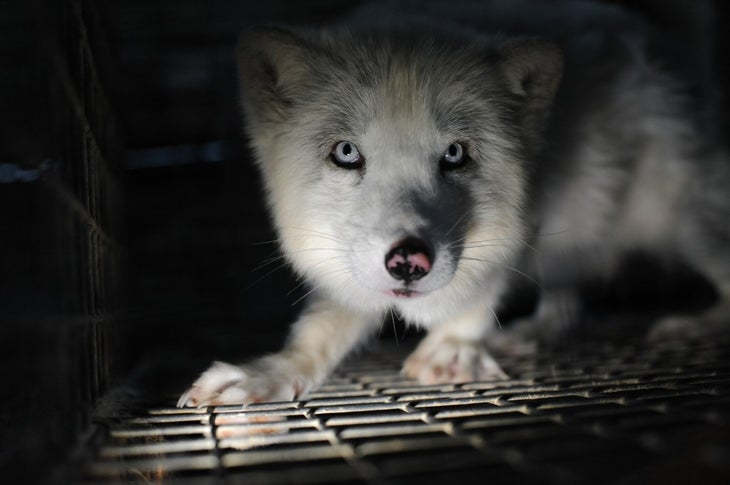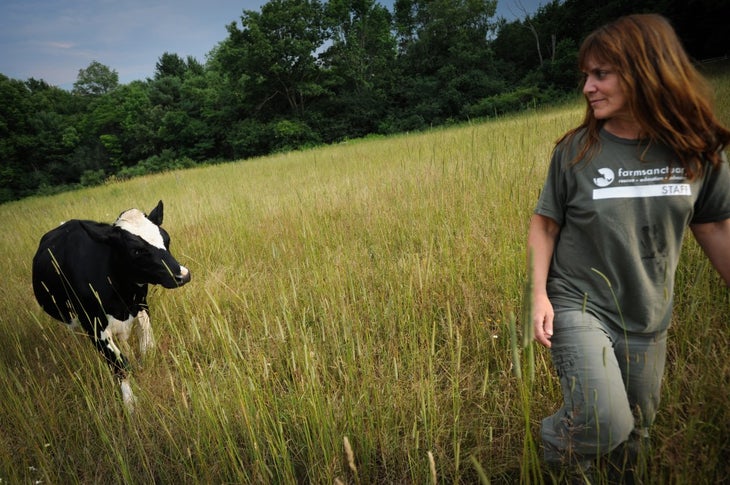Heading out the door? Read this article on the new Outside+ app available now on iOS devices for members! Download the app.
Photo by Jo-Anne McArthur

“As a front-line activist and photographer, I’m often in the trenches,” explains Jo-Anne McArthur, who says in the film The Ghosts in Our Machine that she feels like a war correspondent.The lyrical, often wordless, film is directed by Liz Marshall and shadows McArthur as she documents the lives of animals in research labs and in fur and factory farms. Fortunately for the viewer as well as McArthur, these investigations are balanced by her visits to Farm Sanctuary in New York, where rescued animals are rehabilitated and receive lifelong loving care. McArthur’s sense of mission is palpable in the film, as well as in her answers to questions I raised after watching The Ghosts in Our Machine.
During the sequence where you’re photographing caged foxes at a fur farm, you say you’re not there to liberate them, but to document them. How do you keep that focus?
I go in knowing that I have a limited amount of time to do the best possible work I can, all the while under very stressful conditions, what with the animals suffering so much, and the chance we could get caught. I absolutely have to remain focused. The [undercover] investigators and I put a lot of effort into planning these visits, and sometimes there are only one or two opportunities to get in there and do the work well, to try and connect with and document the animals in the most meaningful way. I have to work quickly and deliberately. All my focus is on the animals and on the photography. It’s emotional, but I deal with that later, not on-site.
You say what’s most important in your work is to create a connection between the animals you photograph and the human viewer. How do you achieve this?
When most of us take photos, we take them from a typical human eye height and from too far away. My advice for photographing animals is to get to their eye level, get close, and be patient. I try to make gentle contact with them, not by touching them but by talking to them and letting them know through my body language that I’m not a human to be feared. We look at one another. I document that gaze, and through those photos, thousands or millions of others can connect with that gaze as well. The eyes speak volumes.
In the film, you comment that the history of animal rights is changing. How so?
The use of animals is one of the most ingrained and normalized aspects of virtually all cultures, but now more than ever there is a global dialogue about animal use. From North America to China to India, Kenya, and Australia, the use of animals and animal rights is becoming part of the public discourse. We see it in the news every day now. More than ever, people aren’t only speaking up for animal rights, but are also eschewing the use of animals altogether. Consumer habits are slowly changing, and whether someone uses animals or not, we all agree that we don’t want to see them abused. Systemic abuse is being investigated, exposed, and called upon to change. So, things are indeed changing, and greater numbers of us human animals are taking part in that change.
Photo by Jo-Anne McArthur
